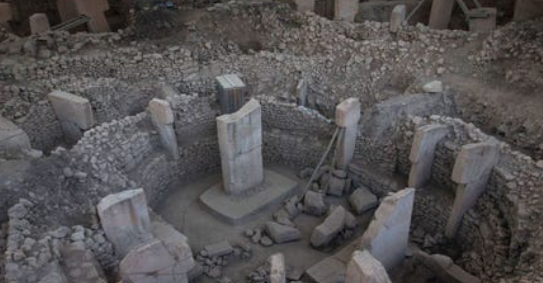At first glance, the V-shaped symbols etched into the pillars of Gobekli Tepe, an ancient site in southern Turkey, might seem unremarkable compared to the more elaborate animal carvings depicting the sun and moon. However, new research suggests these seemingly simple markings could be incredibly significant. They may represent the world’s oldest lunisolar calendar and commemorate a comet strike that occurred around 13,000 years ago, which potentially triggered a mini ice age.
😱👀👍🙏Research at Turkey’s 12,000-year-old Göbekli Tepe site indicates that carvings on ancient pillars likely represent the world’s oldest solar calendar, potentially created to commemorate a catastrophic comet strike that may have spurred civilization. https://t.co/V7yYg0zXri
— Greg Maybury (@gjmaybury) August 12, 2024
According to Martin Sweatman, a scientist from the University of Edinburgh who led the research, the inhabitants of Gobekli Tepe were likely keen sky watchers. This observation is particularly relevant given that their world was severely impacted by a comet strike. Sweatman’s research, detailed in a recent article published in Time & Mind, proposes that the V-shaped symbols carved onto the pillars could correspond to individual days. When these symbols are analyzed collectively, they seem to document the date when a swarm of comet fragments collided with Earth in 10,850 BC. This event is believed to have initiated a 1,200-year ice age, leading to the extinction of many large animals such as mammoths and steppe bison.
Sweatman suggests that this comet impact might have played a significant role in shaping early human civilization. The resulting environmental changes could have prompted the development of new agricultural techniques and a shift in religious practices to adapt to the colder climate. This theory aligns with the broader hypothesis that such catastrophic events could have been pivotal in advancing human societies.
Carvings on a 12,000-year-old monument in Turkey appear to mark solar days and years, making it possibly the oldest solar calendar in ancient civilization.
Göbekli Tepehttps://t.co/kDZwDHopOp— Lee (@LeeAllee26935) August 11, 2024
The idea of a comet impact has long intrigued scientists, and if Sweatman’s V-symbol hypothesis holds true, it could offer strong support for this theory. This discovery might also represent one of the earliest attempts at recording astronomical events, potentially laying the groundwork for the development of writing systems thousands of years later.
Key Points:
i. V-shaped symbols on Gobekli Tepe pillars could indicate the world’s oldest lunisolar calendar.
ii. These symbols might record a comet strike that occurred around 10,850 BC, which triggered a 1,200-year ice age.
iii. The impact may have contributed to the extinction of large mammals like mammoths and steppe bison.
iv. The comet strike could have influenced early human civilization by prompting advancements in agriculture and new religious practices.
v. The discovery might also represent an early form of astronomical record-keeping, potentially paving the way for the development of writing.
Kirk Volo – Reprinted with permission of Whatfinger News

